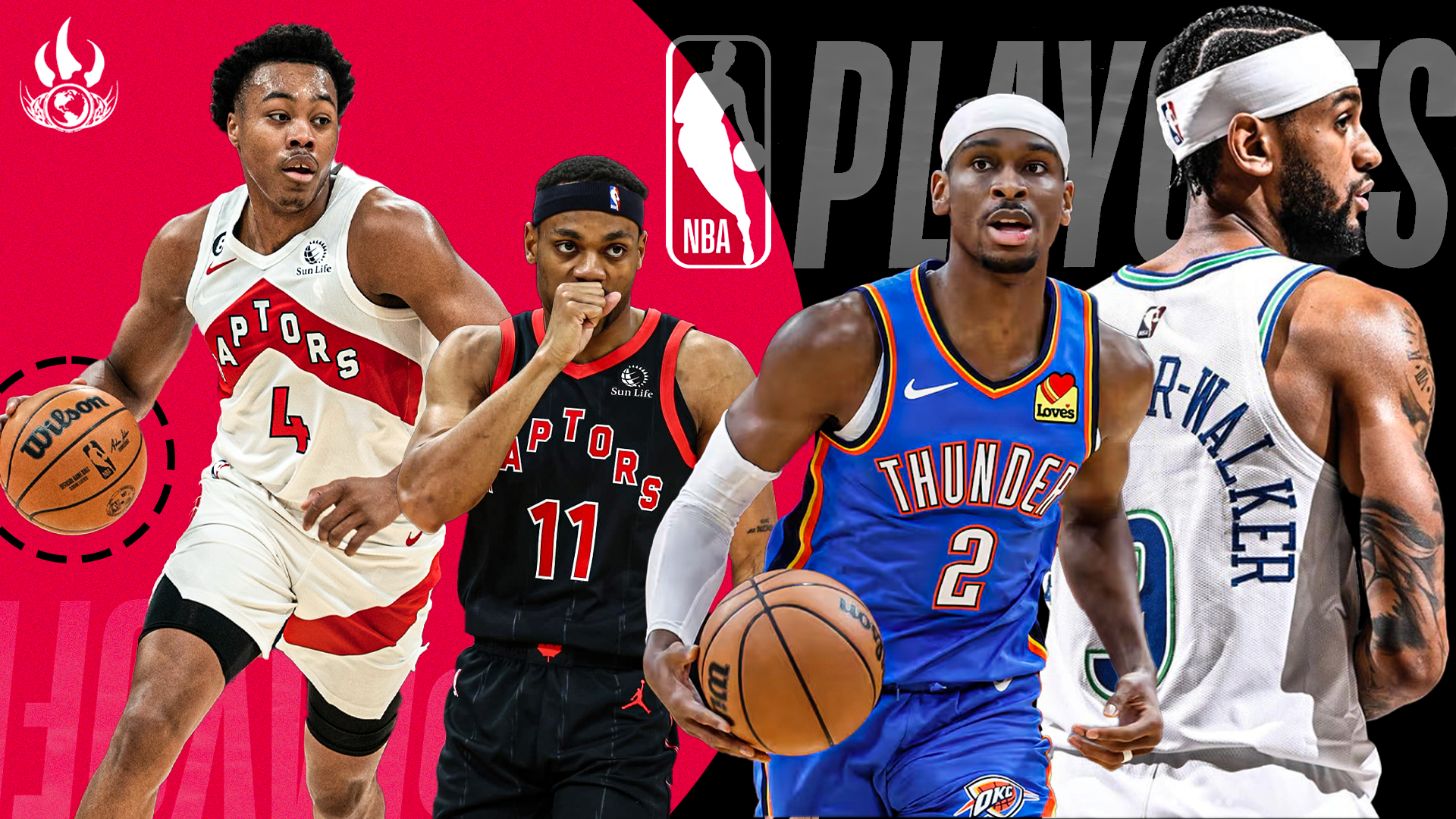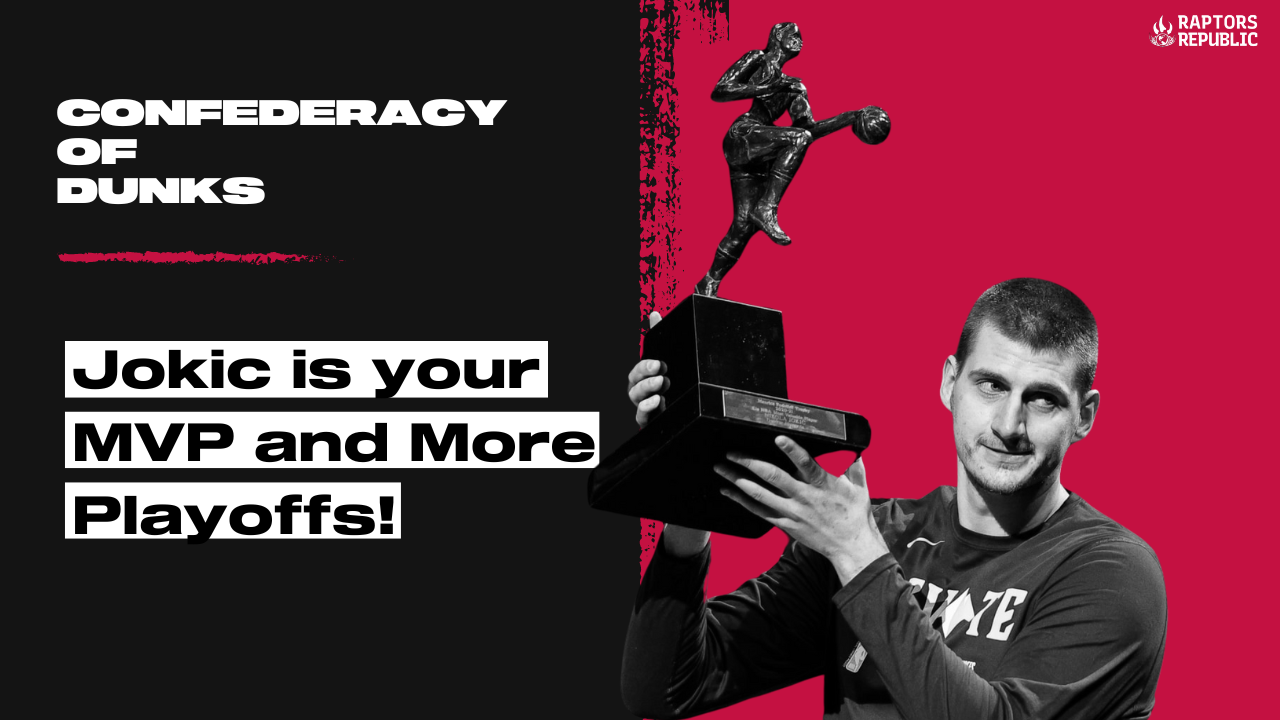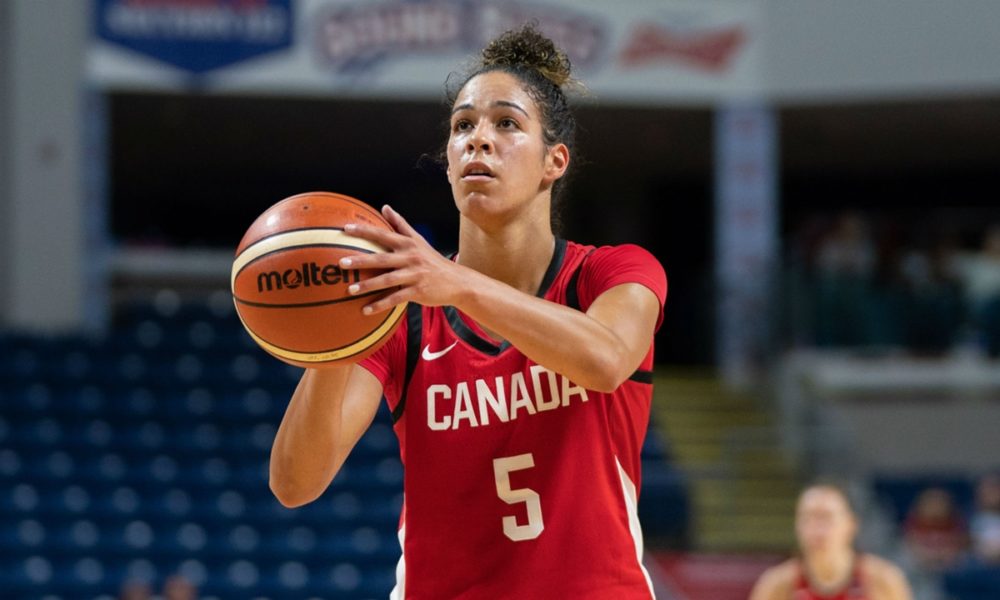The Battle of Waterloo was not so much won by the English as it was lost by the French. By one commander in particular: Marshal Grouchy. Given command of a large portion of Napoleon Bonaparte’s army, Grouchy was commanded to keep the Prussians from making contact with Napoleon. He failed to do so because of a lack of reconnaissance and speed, and when the battle was joined at Waterloo, he moved too slowly to help despite hearing the incredible sound of cannonfire from that direction. Sometimes things move too quickly.
The NBA is in much the same situation today. Speed is the name of the game in team-building. These NBA playoffs are not last year’s NBA playoffs. Plan for the future, and sure, you might miss, but it’s the only way to keep up.
This is the second time I’ve written this column. The idea is inspired by the inimitable Caitlin Cooper, whose work you can read here. It’s the best. The first time I tried it, I wrote about the 2022 Finals and determined the Raptors needed shooting, a drop-defense big, rim pressure, and more. The gettable and inexpensive players I thought would fill the need, Naz Reid (yes), Jalen McDaniels (lol). The following playoffs I wrote about insulating oneself from variance:
“Think of it like boxing: How good is a boxer at protecting his chin from opposing uppercuts? (Defending himself against hot shooting from opponents.) How good is a boxer at working the body even when his own uppercuts aren’t landing? (Still scoring when shooting is cold.)”
Combine the two exercises, and these are the big-picture lessons: good teams today need versatility and the abilities to get hot and score when cold. This is going to be something of a different exercise. The Raptors aren’t at the position right now when such things matter. They’re not that close to the playoffs, and there’s no baseline of success upon which the Raptors can build. Sure, there are a few solid rotation players upon whom the Raptors need to build this offseason. But the Raptors are a long way from identifying playoff schemes and counters and lessons. Or at least implementing them.
Still, Toronto can take much from this year’s playoffs, even if it’s more big picture than small.
Isolation scoring remains paramount. This is almost a truism, as it gets to the heart of the most basic truths in basketball: You need to be able to beat your defender. As much as modern basketball is about teamwork on offense and defense, combining everyone available, using multiple players in multiple schemes at the same time, the core of it all remains the same. And if one person can’t beat one person, then it’s much much harder for five to beat five. It’s possible, but things will move slower than they would otherwise.
That basic fact is at the core of New York’s dominance (Jalen Brunson can’t be stopped), Milwaukee’s survival late in the first round despite injuries (Khris Middleton was the best isolation scorer in many games), Oklahoma City’s always-drive demeanor (Shai is probably the best isolation scorer in the league), Minnesota’s dominance over Denver (Anthony Edwards!), and Dallas’ quiet winning as well (Kyrie and Luka). Indiana’s good (Pascal Siakam, in many games) and bad (Tyrese Haliburton hasn’t been able to score against switches) draw from the same core fact as well. Modern motion offense is good and necessary, but it needs players who can just beat defenders to work. Last year’s Denver Nuggets weren’t the offensive behemoth they were without Nikola Jokic simply being able to score in isolation against anyone.
And Toronto doesn’t have an isolation scorer nearly at that caliber right now. Scottie Barnes has improved, but he still remains far below league average when he finishes an isolation with a shot. RJ Barrett is statistically the only above-average isolation scorer still on the team. But the root of everything else, of offensive scheme, needs improvement. This is what taking heads mean when they say it’s a star-driven league. Toronto needs more stars. (Duh.) The principles, the teamwork, the motion and cutting and ATOs and coaching adjustments and all the rest: gotta have the foundation first.
There was a time in the NBA when decision makers didn’t believe a point guard had to be a strong defender. His role was offense, and largely passing at that. Those days have passed. There is no such thing as hiding a defender in today’s NBA. If he’s at the point of attack matchup up against the opposing point guard, he’ll be run through a gauntlet of ball screens, rescreens, and dribbling moves. If he’s guarding an off-ball player, he’ll defend second-side attacks, handoff actions, and timely cuts. Even hiding a defender in the corner means teams manipulate picks to ensure the poor defender is responsible for tagging and rim help. If you can’t defend, you can’t play.
The best teams still remaining in the playoffs have deadly point-of-attack defenders. Minnesota’s Jaden McDaniels and Nickeil Alexander-Walker are hellacious yet heady hounds of horror for whomever they face. Derrick Jones jr. in Dallas doesn’t have the same press, but he gets the same results. Andrew Nembhard and OG Anunoby are outrageously strong when guarding the ball. Jrue motherfucking Holiday. Now, many of those players are also just as strong when digging / stunting / rotating, as well as protecting the rim, but they’re all (probably) most valuable when guarding the ball.
Is that the most valuable component to strong defense right now? Hard to say. Of the core four (Austrian BBQ), Toronto doesn’t have any defenders that need to be hidden. That’s hugely valuable! But the best teams in today’s NBA all have one of the best point-of-attack defenders in the league. That’s no coincidence.
Elite point-of-attack defenders don’t have to be incredibly hard to acquire. Toronto failed to snag Nembhard at the trade deadline (which really, really hurts), but Jones in Dallas and Alexander-Walker were cheapo free agent contracts. Team search hard to find the right isolation scorer. They shouldn’t need to for ball defenders. And no matter who Toronto finds to fill both roles, the Raptors should want him to be tall.
Of course, that’s all planning for the Raptors to compete in this year’s playoffs. By the team Toronto is ready to contend again, who knows what success will look like.
Some other notes:
- What happened to inverted picks? It’s not a super common action across the NBA, even if watching Fred VanVleet screen for Pascal Siakam convinced you otherwise. But on average, the league only ran 2.7 per 100 possessions in the regular season. The efficiency, though, was high. But in the postseason, while the frequency has increased by almost 1.5x, the efficiency has plummeted. And that’s despite some of the best regular-season combos (LeBron-Russell, Luka-Kyrie, Durant-anyone) making the playoffs. (Siakam-Haliburton continues to shred everyone in the playoffs.) What’s the deal?
- Defenses are switching pretty much everything. That defangs it all. In the regular season, switching was almost as frequent. But it allowed a much higher efficiency. The takeaway has to be that there are just better switch defenders in the playoffs. It’s a vital tool.
- The Raptors, on the other hand, were pretty much undone by inverted picks in the regular season. Since Jan. 17, the Raptors switched at an average rate yet allowed a top-three (highest) efficiency to opponents when doing so. Bruce Brown, Gary Trent jr., and Jordan Nwora were fairly efficient when switching as the screener defender onto the ball. And that’s pretty much it. Gotta get better at switching.
- Defenses are switching pretty much everything. That defangs it all. In the regular season, switching was almost as frequent. But it allowed a much higher efficiency. The takeaway has to be that there are just better switch defenders in the playoffs. It’s a vital tool.
- Let’s talk Obi Toppin. He wasn’t fantastic in New York. I thought he would be solid elsewhere, and I actually wrote that I wanted him in Toronto. But he’s been better than I expected. How has he done it? Well, it helps to become a 40-percent 3-point shooter out of nowhere. And he finishes everything inside the arc, too. Having a top-10 true shooting percentage (top-two among non-bigs) is a pretty easy path to contributing. But his efficiency is more a symptom than a cause of his impact.
- Toppin runs in transition. He’s in the 95th percentile for average speed and top speed in the NBA. He’s in the 86th percentile for transition touch frequency and efficiency. And most of the players above him grab and go themselves; Toppin just runs and trusts a teammate will find him. He sprints into cuts. He tries incredibly hard, and moves very smart, and combine that with his incredible athleticism (and 3-point shooting), and boom, it’s not hard to see why he’s been so efficient.
- The Raptors aren’t going to pry away Toppin from Indiana. But it’s valuable to find other players who can pop in Toronto’s high-tempo system. Barrett was one such player, and he too has made his hay in Toronto with effort, sprinting, transition dominance, and making everything he throws at the rim.
- Some feasible acquisitions of players who run, a lot: AJ Griffin is always running, and he should be an excellent shooter when he gets real minutes. Toronto should try to pry him away from Atlanta. I’ve written about him previously, but I pine for Andre Jackson jr. in Toronto. Finding a contributor like Toppin on the cheap would be a big deal for Toronto.
- Bruce Brown is in an interesting spot. He was playing hurt down the stretch, which might have significantly impacted his play. And the Nuggets are really, really missing his play. He was also quietly one of Toronto’s better defenders (despite not playing up to his standard, at all). His offense was a mess, but he has played in complex systems with success in the past. He looked much better alongside Barnes before he got hurt.
- Watching the playoffs, he is a proven player there. And his skills — movement, defense, size at the guard spot, finishing — are the ones I’m seeing win possessions. I’m still a believer.
- I thought he would be an excellent addition to the Raptors prior to the 2023-24 season. I wrote about it in a couple places, but his cutting and defense seemed like they would be valuable additions. They still should be.
- He has an offseason to become adapted to Toronto’s systems, which never seemed to happen last season. In a more competitive environment, healthier, and with some time under his belt, there’s no reason he can’t still be a positive contributor. If the Raptors have a line on a more significant contributor as a free agent (such as D’Angelo Russell), and they can make the money work, it might make sense to let Brown walk. If there is a real trade package (a meaningful pick on the table), trading him might make sense. But the most likely outcome is that Brown comes back. And he should be a good player if he does.
- The possession battle remains king. The top three teams in offensive rebounding rate in the playoffs remain very much alive. The bottom three are very much eliminated. Two of the top three teams in opposing turnover rate are alive, and own turnover rate, and three of the bottom three in the same two categories are very much eliminated. Nick Nurse was onto something! But if you make an indicator a target, it is no longer predictive. (Thanks Goodhart’s Law!)
- Toronto needs to be able to force steals, and minimize their own. It needs to be able to smash the offensive glass and protect its own glass. It is poor in all four categories right now. That’s kind of a disaster. Part of it can be personnel — offensive rebounding from not the big positions is huge, just look at Josh Hart! Part of it is scheme and using cuts to turn into crashes, allowing more players to attack the offensive glass while still defending in transition, and using more aggressive second-line defense to force turnovers. But possessions have in large part defined these playoffs. Barnes and Poeltl are obviously proven as rebounders on both ends, and Barnes (and Trent, Olynyk) steal the ball too.. Quickley is a solid defensive rebounder at his position. That’s not enough. Toronto’s got to get on board.
- I really wish Toronto traded for Karl-Anthony Towns to pair with Pascal Siakam. Who knows if it was ever a possibility, but he’s such a stud. My goodness. He might be one of the best offensive bigs in NBA history, truly. Just such an easy player to pair with virtually anyone — even another center!
- I know specific plays aren’t really what the Raptors are looking for right now, but why does Toronto not toggle immediately to Poeltl for a weakside handoff with a pull-up shooter (read: Quickley) when defenses lay off of him when he’s standing without the ball on the wing. I thought coming into this past season Toronto would use it more (Barnes and Trent had a few nice reps in 2022-23 doing so when a defender sunk off a spacing Barnes to cheat into the lane), but the frequency never went up. High-pace offensive teams like the Nuggets use it on occasion as a form of judo — when a defense tries to capitalize on the presence of a non-shooter off the ball, the offense can flip it into a strength by turning that cheating defender into a handoff defender against a pull-up shooter. He will be too far to contest the shot. Perhaps we’ll see more from Quickley and Poeltl this upcoming season as they get more time together. But it would be a simple, if occasional, counter when teams use Poeltl’s defender to cheat towards Barnes when he has the ball.
- My goodness OG Anunoby is a fantastic player. Edit: Damn damn an injury, that really sucks. Watching him such a versatile and dominant star-in-his-own-way has been fantastic. I hope this doesn’t affect him at all.
- I thought experience (from at least one star, if not all) was a necessity to going deep in the playoffs, but it’s possible that might be changing. The Minnesota Timberwolves of course have plenty of experience for some of their key players (Rudy Gobert, Mike Conley), but most are relatively new to the playoffs. And the Oklahoma City Thunder are almost complete newcomers. Yet they’re on track to meet in the Western Conference Finals? Obviously nothing is decided yet, but it’s pretty crazy how successful both teams have been even against experienced players and teams.
- I don’t know how this matters to Toronto. Perhaps it doesn’t at all. But it might mean that while veterans are of course useful for development, locker room chemistry, and solidity on the floor, talent is the thing that matters most. The Raptors are far from the playoffs, let alone competing, but if this core does compete in this cycle, I don’t think the Raptors necessarily need to add a star in the prime of his career. A star from the draft could work too.



